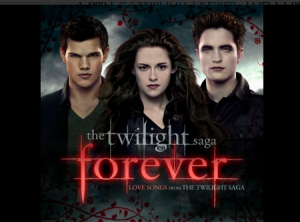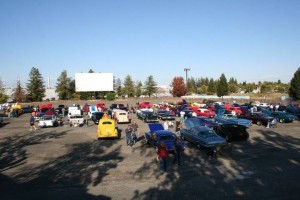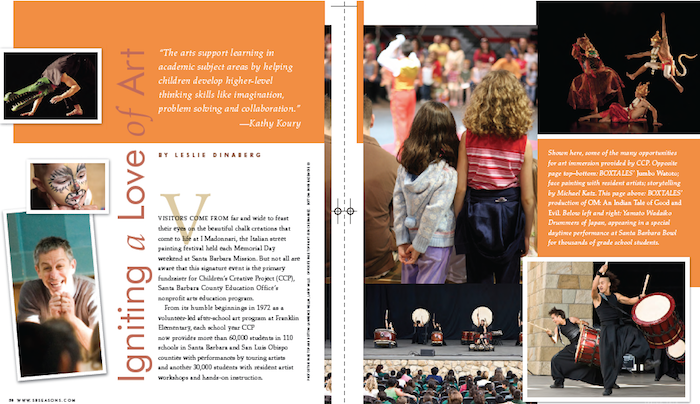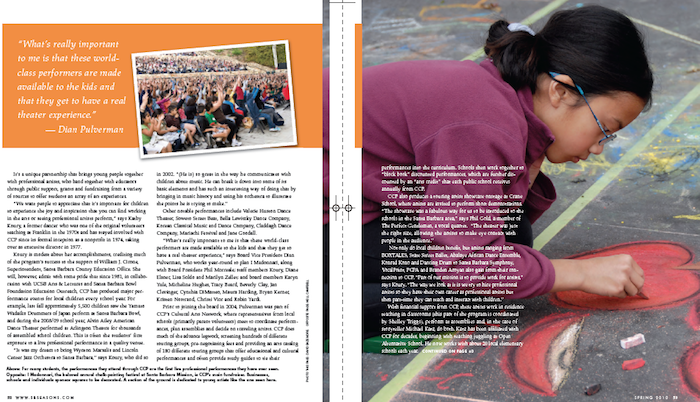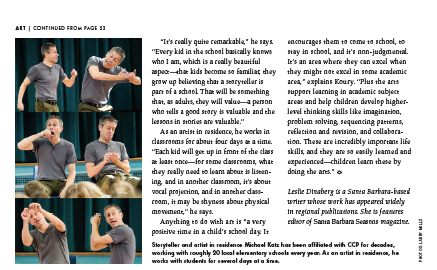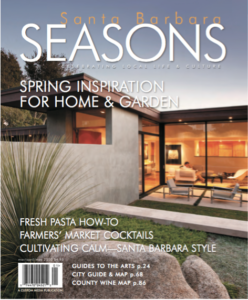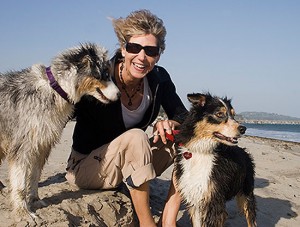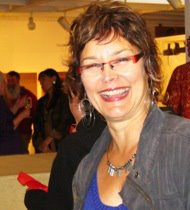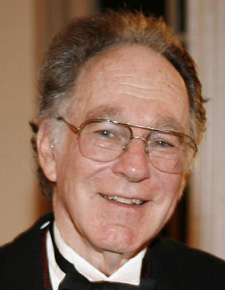
Nathan S. Rundlett, courtesy photo
Sharing his passion for classical music is a labor of love for Nathan Rundlett. In 1994, he and his wife Marilyn Gilbert brought opera to town by founding the nonprofit Opera Santa Barbara. An accomplished baritone, now retired from his dual careers as a singer/high school chemistry teacher, Rundlett devotes much of his time these days to working with the nonprofit Santa Barbara Music Club, a group that presents free concerts and workshops to the community and provides musical education scholarships to young people.
Leslie Dinaberg: How did you get involved with the Santa Barbara Music Club?
Nathan Rundlett: I got interested in the club because it fulfilled a need that I felt when I moved to Santa Barbara (in 1981). I had sort of lost touch with my musical connections, which were in Los Angeles. Here was a great opportunity to perform the music that I loved. I wasn’t working as a musician anymore formally, so this was a great chance just once in a while to get something nice together and present it to an audience. …This club has been in existence, I think, 38 years.
LD: Prior to moving here, where did you perform in Los Angeles?
NR: … I sang in operas and shows and I taught and I sang in a large Methodist church. I also sang for a large Jewish synagogue. I also sang for an Italian restaurant. … We decided to come up to Santa Barbara and I just sort of cut all those ties and started going in a different direction. And got involved in the music club and did a few other odd little things, a few little shows and plays…Then my wife and I decided to fund the opera company.
There was no opera, there was no opera audience– so we created it. We raised money and set up a board, set up a 501(c) 3, gave it a name. Opera Santa Barbara was our baby. And after six years of running it we left it.
LD: So your wife, Marilyn Gilbert, is a singer as well?
NR: Yes, she’s a very fine singer.
LD: Is that how you met?
NR: Yes. I met her singing at Temple Sinai on Wilshire Boulevard. We met over the high holidays. … She is also an attorney, semi-retired now. She has sung has sung in music club, often, and we have sung together in the music club, duet programs and so on. It’s been very enjoyable.
LD: What are your responsibilities for the music club?
NR: My responsibility so far has been trying to pick up loose ends … what I want to do, as Vice President is development. Go into new areas, involve young people more and form better connections with schools. And also focus a lot more on the scholarship program. I think it’s our strong suit.
LD: Tell me about that.
NR: Our scholarship program has been there since almost the beginning. And we had some…distinguished, elderly music lovers, benefactors, teachers and lovers of music. One of them died and left us money and the other one just gave a lot of money and so we built up this nice fund to do scholarships with and now I’m hoping–this is just a wild idea–to turn it into an endowment, so we can live off the principal and keep it for many, many years… But I think that the scholarship program is one of the strongest things that we do, because that brings music ahead, classical music particularly, we’re interested in classical music. It brings it forward into the future and involves young people.
LD: And the scholarships go specifically toward instruction?
NR: Yes, it’s only instruction and the teacher and the student have to be residents of Santa Barbara County, so it’s local local, it’s only local which I like.
LD: What is your musical training?
NR: I was trained in college…I became interested in opera singing, briefly considered a career in it, and so I took private lessons in LA from an Italian teacher and I got involved in singing small productions and so on. I went to several coaches… I didn’t take a formal musical training. I wasn’t a music major or music minor. I was actually a chemistry major and a math minor.
LD: Oh wow, that’s probably very unusual, right?
NR: Yeah. But I love performing and I’ve done a lot of singing and acting.
LD: So have you always made your living in the arts or did you do something else?
NR: I taught high school chemistry for 30 years and I did all this other music kind of on the side.
LD: Where did you teach?
NR: I taught in Los Angeles, Granada Hills, Mission Hills, and in Camarillo.
LD: And you were performing at the same time?
NR: Yes, it worked out to be ideal because my school day was finished early and there were lots of rehearsals that didn’t start until late afternoon or evening … then the summers were free and the holidays, a lot of free time to do my music. For a while there I was making about equal amount of money teaching school and singing.
LD: Other than your performances with the music club, do you perform anywhere else in town?
NR: Ever since we left the opera company what we’ve been doing is putting on fundraisers. We put on a couple of Spanish operas for the Legal Aid Foundation… My wife and I did a series of two-person plays last year … For the Anti Defamation League we did performance of “Trial by Jury” by Gilbert and Sullivan. We did also Gilbert and Sullivan for the Santa Barbara Legal Aid Foundation. That was amazing. We did a big performance in the courthouse … the play is about a courtroom trial, so we did the trial in the courtroom …
LD: What else do you like to do?
NR: Well my second passion besides music is woodworking. I like making fine furniture, and cabinet making is my main passion. I took up carving recently and attended several seminars in Williamsburg, VA related to period furniture. …
LD: Do you have a favorite song or a favorite piece of music?
NR: My favorite piece of music to sing, of all time, was the prologue from the opera “Pagliacci.”
LD: How would you describe yourself?
NR: I love music and I love music performance. I enjoy life
I enjoy my family, particularly my great relationship with my wife. We have a wonderful marriage. So those are the important things I guess to me, music, life and my family and my wife.
Vital Stats: Nathan Rundlett
Born: Somerville, Mass; February 23, 1938
Family: Wife Marilyn Gilbert, children Anne, Kirsten, Steven, and Elisabeth (all in their 40s), 14 grandchildren
Civic Involvement: Santa Barbara Music Club, Legal Aid, Anti-Defamation League
Professional Accomplishments: Taught chemistry for 30 years, and developed new programs in field of education. Third place winner in Metropolitan Opera auditions for the west coast of the United States. Founder of Opera Santa Barbara.
Little-Known Fact: “At one time my passion was running, maybe nobody would know that looking at me now but in high school and college, track and field was a passion.”
Originally published in Noozhawk on January 7, 2008.
 Is there really such a thing as dude food? If you were an alien looking in on our culture of Burger King and Yoplait ads you would certainly think so. But how much of our “dude food” and “chick picks” food preferences are based on cultural and gender stereotypes and messaging? A lot, according to “Mindless Eating: Why We Eat More Than We Think,” a book I recently picked up.
Is there really such a thing as dude food? If you were an alien looking in on our culture of Burger King and Yoplait ads you would certainly think so. But how much of our “dude food” and “chick picks” food preferences are based on cultural and gender stereotypes and messaging? A lot, according to “Mindless Eating: Why We Eat More Than We Think,” a book I recently picked up.
